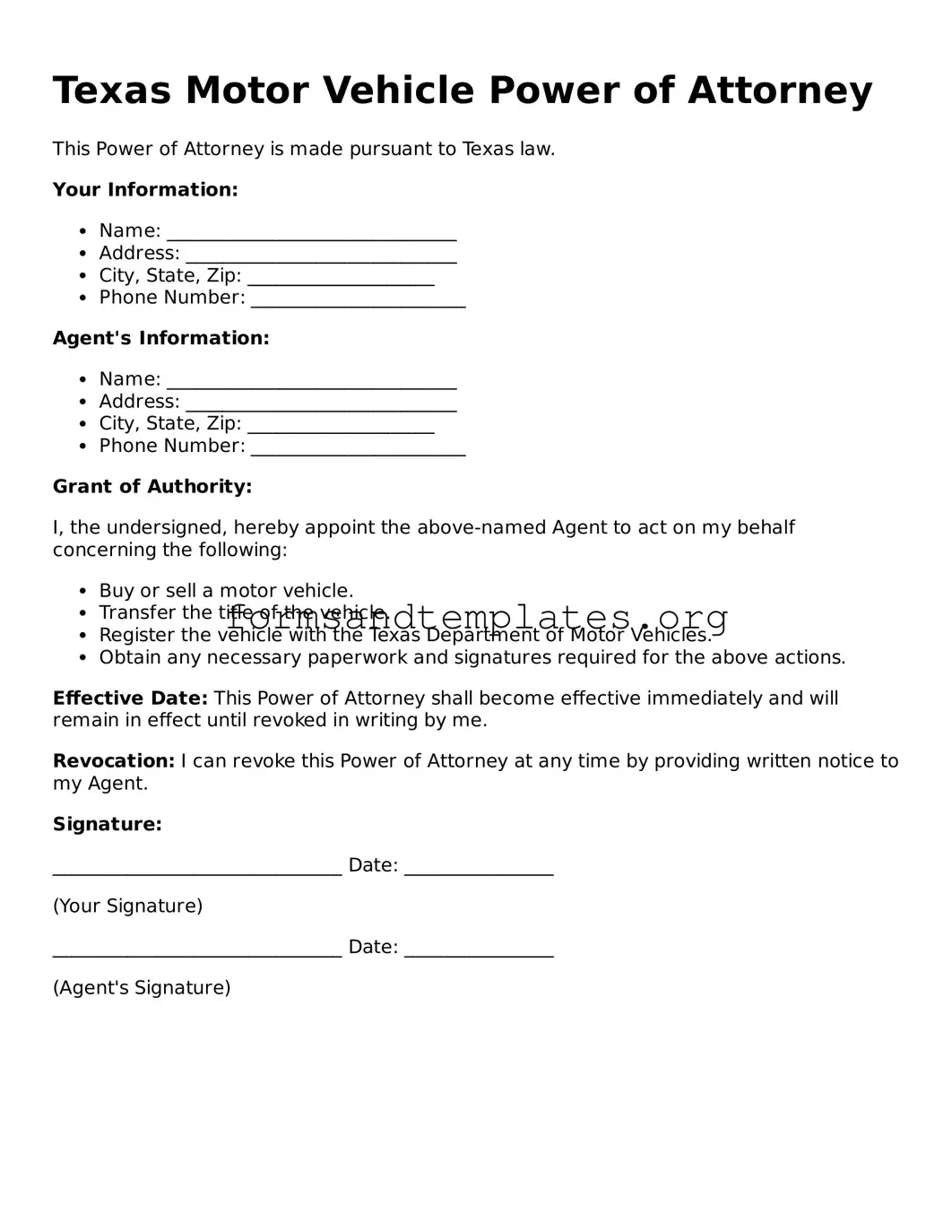Motor Vehicle Power of Attorney Template for the State of Texas
The Texas Motor Vehicle Power of Attorney form is a legal document that allows an individual to designate another person to act on their behalf in matters related to motor vehicle transactions. This form is particularly useful when the vehicle owner cannot be present to complete necessary paperwork, ensuring that their interests are represented. Understanding how to properly fill out and utilize this form can streamline the process of managing vehicle-related affairs.
Ready to get started? Fill out the form by clicking the button below.
Access Editor Here
